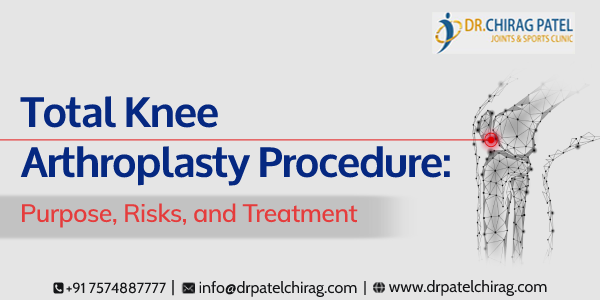Total Knee replacement, also known as knee arthroplasty is a procedure that involves surgery to replace the damaged knee due to arthritis. The surgery has become quite routine for patients with severe arthritis or other injuries that have damaged the knee. It involves the use of plastic or metal structures to cover the ends of the knee bones.
Aim of Total Knee Arthroplasty
The surgery aims to alleviate pain due to the damaged joint and to make the joint fit for use again. The surgery causes people to live better, functional, and pain-free lives.
Surgical Procedure
Knee arthroplasty requires the patient to stay for a short while in the hospital. The patient is given general anesthesia. While the procedure may vary depending upon your condition or the doctor, all surgeries basically have the same steps which are described as follows:
- An intravenous line (IV) is inserted in the patient’s arm.
- The patient is transferred and correctly positioned on the operating table.
- A catheter for urine is inserted.
- Excess hair at the site of surgery is removed and the site is cleaned with an antiseptic.
- The doctors constantly monitor the heart rate, BP, and oxygen level in the blood during the surgery.
- An incision is made at a strategic site.
- The damaged portions of the joint are removed and the joint is resurfaced using metal or plastic parts.
- The incision is closed with stitches or staples
- A pipe is placed at the site of the incision to drain any excess fluid.
- The wound is dressed.
Total Knee Arthroplasty: Possible Risks
Total knee arthroplasty has become quite a common procedure. One should, however, be aware of the possible risks of this surgery. Some of them are as follows:
- Pain: Some pain after the surgery is quite routine. It ideally gets better with time. Pain-relieving medications are prescribed by doctors to combat this. In rare cases, if the pain continues to persist, one should approach the doctor.
- Allergies: Some people might get allergic to the metal parts of the artificial knee. The patient is screened for any possible allergies before the process.
- Bleeding: The surgical wound might take time to heal or develop infections.
- Nerve damage: Some patients experience nerve damage. The damage can be mild to moderate and include symptoms such as numbness, tingling, or weakness.
Conclusion
If you are facing any bone-related problems or sports injuries and are looking for an orthopedic hospital in Mumbai then, you should approach Dr. Chirag Patel. He is popularly known as the best ortho doctor in Mumbai. Even a cursory look at the patient testimonials and reviews on his website reveal that he is one of the top bone specialist doctors in Mumbai. With an MBBS and an MS degree and a wealth of experience, Dr. Patel treats all kinds of hip and joint problems.
He specializes in joint replacement, joint revision, and hip resurfacing surgeries. In addition to that, he is also well trained in computer-assisted navigation and Uni- Condylar knee replacement surgeries. Dr. Patel has won several international accolades and fellowships namely Adult Joint Reconstruction Fellowship, Seoul, South Korea, Ranawat Orthopaedic Research Foundation Fellowship, New York, USA et al. for his contributions to the orthopaedic field.





